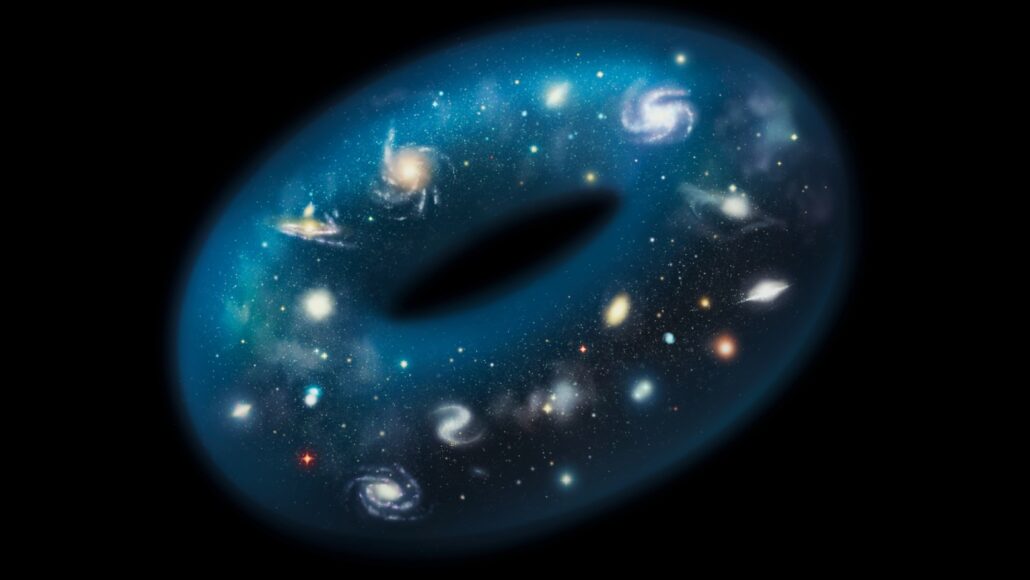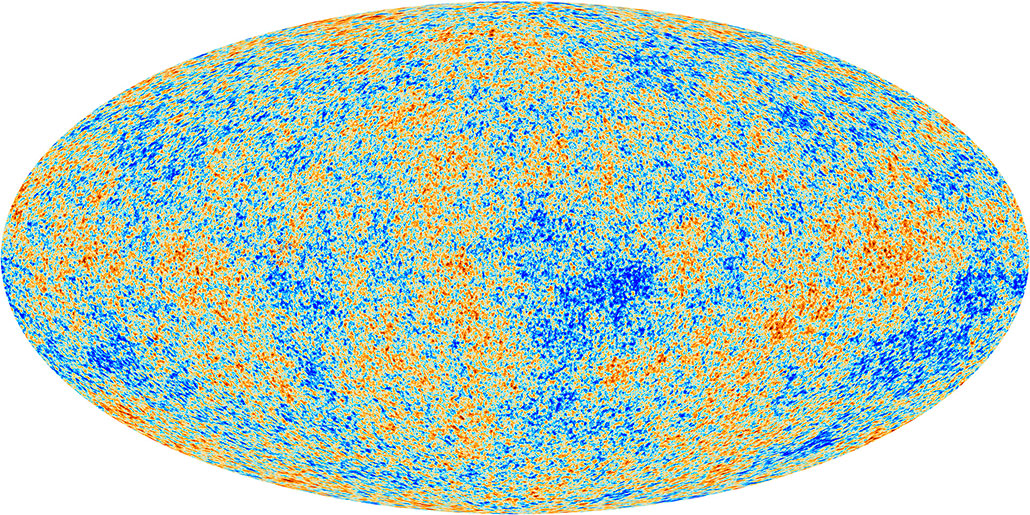The shape of our universe may be complex — like a doughnut
If true, that could solve a mystery about how ancient light spread throughout the cosmos

The universe might have a complicated geometry, represented by the doughnut shape in this artist’s conception.
J. Law/ESO
Share this:
- Share via email (Opens in new window) Email
- Click to share on Facebook (Opens in new window) Facebook
- Click to share on X (Opens in new window) X
- Click to share on Pinterest (Opens in new window) Pinterest
- Click to share on Reddit (Opens in new window) Reddit
- Share to Google Classroom (Opens in new window) Google Classroom
- Click to print (Opens in new window) Print
The universe may have something in common with a doughnut.
Doughnuts have a complex shape — what mathematicians would call a “nontrivial topology.” In a universe with such a complex shape, you could travel across the cosmos and end up back where you started. Past research seemed to rule out that our universe is like this. But not so fast, a group of physicists now says. The shape of the universe might still be as complex as that of a doughnut.
Glenn Starkman and his colleagues shared this idea April 26 in Physical Review Letters. Starkman is a physicist at Case Western Reserve University. That’s in Cleveland, Ohio.
Understanding the contours of our universe is important, Starkman says. One reason is that it could solve a puzzle about the cosmic microwave background. This is ancient light spread throughout the cosmos. Some of its features suggest that space is not the same in all directions. That asymmetry is “one of the biggest new mysteries about the universe,” Starkman says.
And it could be explained by the universe having a complex topology.

Simple versus complex shapes
Some objects have simple, or “trivial” shapes. On objects like this, any closed loop can be shrunk down to a single point. Take the Earth, which is roughly a sphere. If you travel all the way around the world along the equator, that’s a closed loop. But if you shift your trip up to the North Pole, you can squish that loop down to a single point. So a sphere has a simple — or “trivial” — shape.
A doughnut does not. On objects such as this, some closed loops can’t be squished to single points. Take a loop around the hole of a doughnut. That loop can’t be shrunk to a point: The hole gets in the way.
The universe is generally thought to have a simple shape — more like a sphere than a doughnut. But scientists have wanted to test if that’s true.
“I find it fascinating,” says Dragan Huterer. This cosmologist works at the University of Michigan in Ann Arbor. He was not involved with the study. Huterer is not just intrigued by the idea that the cosmos might have a complex topology. What’s really cool, he says, is that “we might be able to measure it.”
Mapping the shape of outer space
One way to tell if the cosmos has a complex shape is to check if space loops back on itself. In such a universe, traveling across space might be like moving across the screen in Pac-Man. In that video game, moving all the way to the right edge of the screen puts the character back at the left side.
Scientists have hunted for signs that the universe doubles back on itself. To do this, they’ve looked at the cosmic microwave background.
If space loops like a Pac-Man screen, then the cosmic microwave background might look the same in more than one place. So researchers have searched for identical circles in that light that appear in two different places on the sky. They’ve also hunted for subtle similarities between different spots.
So far, there’s no proof that space loops. But there’s still a chance that the universe’s topology is complex, Starkman’s team says. Why? Because the universe might have any of many different complex shapes. And past research has looked for evidence of only some of those shapes.
Do you have a science question? We can help!
Submit your question here, and we might answer it an upcoming issue of Science News Explores
Topologies to explore
One complex shape is a looping cube, called a 3-torus. It’s sort of like a 3-D version of the Pac-Man screen. In such a topology, exiting any side of that cube brings you back to the opposite side, facing the same way you were before.
Searches for signs that the universe is a 3-torus have come up empty. But no one has yet searched for hints that the cosmos is some variation of a 3-torus. Maybe we exist inside a cosmic cube where the sides are twisted. In that type, exiting the top of the cube would bring you back to the bottom — but you might be flipped upside-down when you get there.
The new study looked at 17 possible complex shapes for the cosmos. Most of them haven’t yet been ruled out, the researchers found. And features in the cosmic microwave background could help tease out which of these shapes — if any — our universe has.
Finding those features would likely require a lot of computing power. But machine learning could speed up the calculations.
The cosmic microwave background isn’t the only place to look for clues about the shape of the universe, either. The spread of galaxies across space might also offer useful information. The European Space Agency’s Euclid space telescope could gather such data. Starkman’s team plans to scour those observations for new leads.







